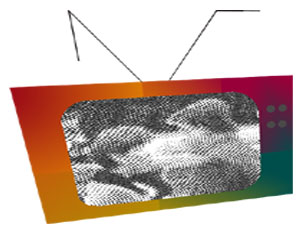
Today's plain-vanilla programming gives us a skewed picture of reality
published July
16, 2001
written by Harry Mok / San Francisco
When I was growing up, my mom used say I'd go blind if I watched too much TV.
She might have been onto something.
White male characters dominate prime-time television, according to "Fall Colors 2000-01 ," a report by Children Now. This isn't earth-shattering news, but the child advocacy group also says that these images send children skewed messages about the status and value of women and minorities. TV's lack of ethnic diversity affects the way viewers--especially the young and impressionable--perceive themselves and interact with particular groups.
"It's important that television reflect the diversity in the world that's outside," says Patti Miller, director of the Children and the Media Program for Children Now. "Those images send messages about who is important … We get messages about possible roles and future careers."
Children Now's study examined the race, gender, class, sexual identity, disability, and occupation of all the characters on prime-time comedies and dramas on the six broadcast networks.
Among the findings:
· The "family hour" of 8 p.m. to 9 p.m., when children are most likely to be watching, was the least diverse during prime time.
· Of the 88 shows studied, 17 percent of the 2,251 prime-time characters were African Americans, 3 percent were Asian Americans, 2 percent were Latinos, and only 0.2 percent were Native Americans. Most of the non-white actors played non-recurring characters; diversity decreased significantly when only counting main characters.
· Since the 1999-2000 season, Latino characters during prime time have decreased from 3 percent to 2 percent. Asian American characters increased from 2 percent to 3 percent.
· Characters of low socio-economic status such as domestic workers, homemakers, nurse's or physician's assistants and unskilled laborers were all played by people of color, mainly Latinos.
· Only five prime-time characters were Native American.
· Only 2 percent of prime-time characters were gay or lesbian.
After Bill Cosby's breakthrough Cosby Show in the 1980s, more realistic black characters and shows became commonplace. But as the Children Now report shows, the progress made by African Americans on the air hasn't be been matched by other groups. For instance, roughly 15 percent of U.S. physicians are Asian American, and Dr. Sung Lee , an Asian American surgeon, performed the recent heart surgery on Vice President Dick Cheney. But tune into ER or any of the other hospital-themed shows and there are few Asian American doctors.
Even the gay and lesbian community has made few strides in recent years. Ellen Degeneres came out on her show Ellen, but the series got mired in the fallout from that trend-setting episode. The show didn't last long after that. Now it seems all the gay characters out there have to be off the wall or exaggerated to make it onto a show.
The latest Census figures show that the country is changing rapidly . Non-Hispanic whites were about 69 percent of the nation's population in the 2000 Census, down from 76 percent in 1990. But the television and entertainment industries haven't kept up with those changes. Our friends probably do not look like the cast of Friends on NBC. Even Star Trek Voyager, a science fiction set in the 24th century, doesn't reflect the diversity of the 21st century (out of this world aliens don't count).
"Seventy-five percent of youths say they have a friend of another race," Miller says. "Kids are living in a much more diverse world."
Straight-and-white TV